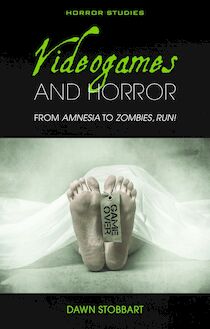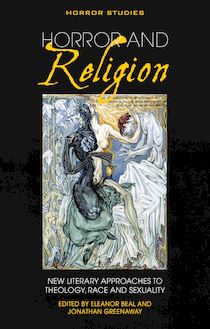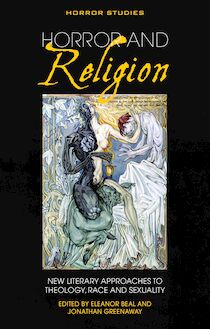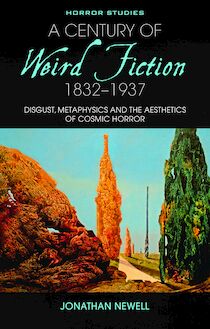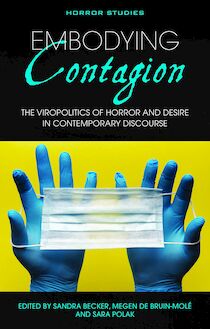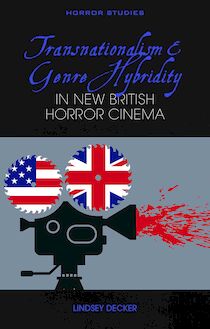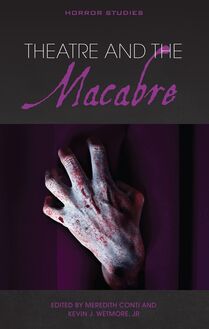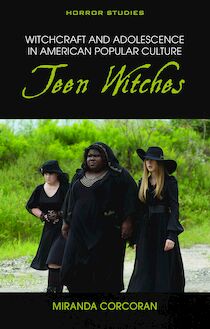-
 Univers
Univers
-
 Ebooks
Ebooks
-
 Livres audio
Livres audio
-
 Presse
Presse
-
 Podcasts
Podcasts
-
 BD
BD
-
 Documents
Documents
-
- Cours
- Révisions
- Ressources pédagogiques
- Sciences de l’éducation
- Manuels scolaires
- Langues
- Travaux de classe
- Annales de BEP
- Etudes supérieures
- Maternelle et primaire
- Fiches de lecture
- Orientation scolaire
- Méthodologie
- Corrigés de devoir
- Annales d’examens et concours
- Annales du bac
- Annales du brevet
- Rapports de stage
La lecture à portée de main
Vous pourrez modifier la taille du texte de cet ouvrage
Découvre YouScribe en t'inscrivant gratuitement
Je m'inscrisDécouvre YouScribe en t'inscrivant gratuitement
Je m'inscrisEn savoir plus
Vous pourrez modifier la taille du texte de cet ouvrage
En savoir plus

Description
This book offers a new critical perspective on the weird that combines two ways of looking at weird and cosmic horror. On the one hand, critics have considered weird fiction in relation to aesthetics – the emotional effects and literary form of the weird. On the other hand, recent scholarship has also emphasised the potential philosophical underpinnings and implications of weird fiction, especially in relation to burgeoning philosophical movements such as new materialism and speculative realism. This study bridges the gap between these two approaches, considering the weird from its early outgrowth from the Gothic through to Lovecraft’s stories – a ‘weird century’ from 1832–1937. Combining recent speculative philosophy and affect theory, it argues that weird fiction harnesses the affective power of disgust to provoke a re-examination of subjectival boundaries and the complex entanglement of the human and nonhuman.
Chapter 1: Introduction – Metaphysical Malignancies
Chapter 2: The Putrescent Principle – Edgar Allan Poe
Chapter 3: Ecstasies of Slime – Arthur Machen
Chapter 4: Horrible Enchantments – Algernon Blackwood
Chapter 5: Disgusting Powers – William Hope Hodgson
Chapter 6: Daemonology of Unplumbed Space – Howard Phillips Lovecraft
Conclusion: The Wisdom of the Unhuman
Bibliography
Sujets
Informations
| Publié par | University of Wales Press |
| Date de parution | 15 mars 2020 |
| Nombre de lectures | 0 |
| EAN13 | 9781786835468 |
| Langue | English |
Informations légales : prix de location à la page 0,2850€. Cette information est donnée uniquement à titre indicatif conformément à la législation en vigueur.
Extrait
A CENTURY OF
Weird Fiction
1832–1937
HORROR STUDIES
Series Editor
Xavier Aldana Reyes, Manchester Metropolitan University
Editorial Board
Stacey Abbott, Roehampton University
Harry M. Benshoff, University of North Texas
Linnie Blake, Manchester Metropolitan University
Fred Botting, Kingston University
Steven Bruhm, Western University
Steffen Hantke, Sogang University
Joan Hawkins, Indiana University
Agnieszka Soltysik Monnet, University of Lausanne
Bernice M. Murphy, Trinity College Dublin
Johnny Walker, Northumbria University
Preface
Horror Studies is the first book series exclusively dedicated to the study of the genre in its various manifestations – from fiction to cinema and television, magazines to comics, and extending to other forms of narrative texts such as video games and music. Horror Studies aims to raise the profile of Horror and to further its academic institutionalisation by providing a publishing home for cutting-edge research. As an exciting new venture within the established Cultural Studies and Literary Criticism programme, Horror Studies will expand the field in innovative and student-friendly ways.
A CENTURY OF
Weird Fiction
1832–1937
DISGUST, METAPHYSICS AND THE AESTHETICS OF COSMIC HORROR
JONATHAN NEWELL
© Jonathan Newell, 2020
All rights reserved. No part of this book may be reproduced in any material form (including photocopying or storing it in any medium by electronic means and whether or not transiently or incidentally to some other use of this publication) without the written permission of the copyright owner except in accordance with the provisions of the Copyright, Designs and Patents Act. Applications for the copyright owner’s written permission to reproduce any part of this publication should be addressed to the University of Wales Press, University Registry, King Edward VII Avenue, Cardiff, CF10 3NS.
www.uwp.co.uk
British Library Cataloguing-in-Publication Data
A catalogue record for this book is available from the British Library.
ISBN 978-1-78683-544-4
eISBN 978-1-78683-546-8
The right of Jonathan Newell to be identified as author of this work has been asserted in accordance with sections 77 and 79 of the Copyright, Designs and Patents Act 1988.
The publisher has no responsibility for the persistence or accuracy of URLs for any external or third-party internet websites referred to in this book, and does not guarantee that any content on such websites is, or will remain, accurate or appropriate.
Cover image: Max Ernst, Solitary and Conjugal Trees (1940), oil on canvas. By permission, Peter Horree / Alamy Stock Photo.
To Alli, who brightens even the depths of unplumbed space.
Contents
Acknowledgements
1. Introduction
Metaphysical Malignancies
2. The Putrescent Principle
Edgar Allan Poe
3. Ecstasies of Slime
Arthur Machen
4. Horrible Enchantments
Algernon Blackwood
5. Disgusting Powers
William Hope Hodgson
6. Daemonology of Unplumbed Space
Howard Phillips Lovecraft
Conclusion
The Wisdom of the Unhuman
Endnotes
Bibliography
Acknowledgements
I WOULD LIKE to offer tremendous gratitude to Dr Sandra Tomc, whose patience, insightful advice, good humour and superb mentorship were invaluable in navigating the murky and pitfall-riddled terrain of weird scholarship. Her guidance and unflagging cheerfulness helped sustain this project and its author through periods of puzzlement and doubt that sometimes seemed equal to the horrors of an unknowable cosmos. Dr Adam Frank and Dr Suzy Anger were similarly indispensable, asking perceptive and intellectually enriching questions no less consciousness- expanding than the musings of the German idealists or speculative realists.
I would also like to thank a number of colleagues in the English Department at UBC whose intellectual (and personal) generosity have profoundly shaped my scholarship and, indeed, my life: Dr Tiffany Potter, Dr Siân Echard, Dr Stephen Guy-Bray, Dr Elizabeth Hodgson and Dr Margery Fee. Special thanks also to my colleagues in the International Gothic Association for their friendship, expertise and encouragement, especially Dr Xavier Aldana Reyes, Dr Chloé Germaine Buckley and Dr Neil Kirk.
In addition, I offer enormous thanks to my parents, David and Shaaron Newell, whose dauntless encouragement led me not only into graduate studies but to English literature in the first place, as well as to my brothers, Benjamin and Simon Newell. Finally, special and inestimable thanks are owed to my wife, Allison Sullivan, who has put up with mountains of books and endless talk of tentacular monsters, and whose wit, wisdom and warmth are truly and continuously astonishing. Without her support, love and confidence, this book would not exist.
1
Introduction
Metaphysical Malignancies
I N H. P. LOVECRAFT’S short story ‘Cool Air’ (1928), the nameless narrator moves into a converted brownstone in New York. Alarmed by an odour of ‘pungent ammonia’, he investigates: the source of the chemical spill is the enigmatic Dr Muñoz, his upstairs neighbour. 1 Despite the strangeness of the chemical baths that the doctor takes, his proximity proves life-saving when the narrator suffers a heart attack and lurches upstairs in search of help. Upon meeting the strange, reclusive man, the narrator is instantly but unaccountably repelled, nausea stealing over him despite his desperation: ‘as I saw Dr Muñoz in that blast of cool air’, he tells us, ‘I felt a repugnance which nothing in his aspect could justify’ (p. 133). Returned to health by Dr Muñoz, the narrator slowly befriends the curious and ‘and even gruesome’ (p. 135) physician. As the story progresses, it is revealed that using techniques of extreme refrigeration Dr Muñoz keeps a mysterious malady at bay, relying on what at first seems to be some combination of medicine and unusual cryonic science. As time passes, the physician hints at forces sustaining him beyond those explicable by science, speaking of how ‘will and consciousness are stronger than organic life itself’ (p. 133). But all is not well with the good doctor, for all his cooling technology and mysticism: he dwindles, eating less and less, talking often of death. An unpleasant odour develops in his apartment that has nothing to do with his constant chemical baths.
Then, one day, ‘the horror of horrors came with stupefying suddenness’ (p. 136): the refrigeration machine breaks. Dr Muñoz alerts the narrator to his need by thumping on the floor and cursing in ‘a tone whose lifeless, rattling hollowness [surpasses] description’ (p. 136). Kept in a tub of ice, the physician is rapidly declining, and there is a hint of ‘fiendish things’ in the air as the stench intensifies (p. 137). The narrator goes out to find workmen to repair the doctor’s machines but returns to discover the apartment in disarray. The only trace of Dr Muñoz is a ‘terrible little pool’ and a few ‘nauseous words’ of ‘noisome scrawl’ on a paper ‘hideously smeared’, as well as a ‘dark, slimy trail’ leading from the note to the couch ‘and [ends] unutterably’ (pp. 137–8). The words reveal that Dr Muñoz had persisted in a state between life and death despite having ‘died’ years before. His liminal state presents a host of ontological paradoxes, inviting the reader to question the boundary between life and death, human and non-human, consciousness and world, spirit and matter. What seems to be a story about speculative technology turns out to be a story that is also about speculative metaphysics, about the possibility of some horrific vitalism, life sustained by the power of the will rather than the operation of organs. Such philosophical speculations are not illustrated using the dry, detached tone of the metaphysician, however, but with expostulations of growing repugnance finally culminating in an awful confrontation with the doctor’s horrifically deliquescent remains.
‘Cool Air’ was rejected by Weird Tales for the intensity of its disgusting content. Lovecraft credits the inspiration of the story to ‘The Novel of the White Powder’, an embedded tale in The Three Imposters (1895) by Arthur Machen, one of Lovecraft’s literary heroes. 2 Machen’s story, in turn, owes much to Edgar Allan Poe’s ‘The Facts in the Case of M. Valdemar’ (1845). Both predecessors of ‘Cool Air’ are tales of putrefaction and necrotic slime, the horrific, undifferentiated sludge of decay; both also deal with ontological paradox and the breakdown of normally sacrosanct categories. ‘Cool Air’ and its fictional forebears dwell with both disgust and fascination upon things beyond the limit of thought: what it is like to be dead, what happens to consciousness after death and the mystery of thinking matter. Such stories are speculative portals, vortices through which realities otherwise unthinkable might be imagined. They seek to propel readers vertiginously into the realm of the unknown.
In Supernatural Horror in Literature (1927), Lovecraft himself tells us that what he calls the ‘true weird tale’ must have ‘something more than secret murder, bloody bones, or a sheeted form clanking chains according to rule’. He insists that in weird fiction
a certain atmosphere of breathless and unexplainable dread of outer, unknown forces must be present; and there must be a hint, expressed with a seriousness and portentousness becoming its subject, of that most terrible conception of the human brain – a malign and particular suspension or defeat of those fixed laws of Nature which are our only safeguard against the assaults of chaos and the daemons of unplumbed space. 3
A Century of Weird Fiction, 1832–1937: Disgust, Metaphysics and the Aesthetics of Cosmic Horror takes Lovecraft’s suggestion seriously to argue that weird fiction, through the means of an aesthetic experience generated by a form of disgust, allows for a moment of what the philosopher of art Carolyn Korsmeyer calls ‘aesthetic cognition’, a visceral aesthetic encounter allowing for qu
-
 Univers
Univers
-
 Ebooks
Ebooks
-
 Livres audio
Livres audio
-
 Presse
Presse
-
 Podcasts
Podcasts
-
 BD
BD
-
 Documents
Documents
-
Jeunesse
-
Littérature
-
Ressources professionnelles
-
Santé et bien-être
-
Savoirs
-
Education
-
Loisirs et hobbies
-
Art, musique et cinéma
-
Actualité et débat de société
-
Jeunesse
-
Littérature
-
Ressources professionnelles
-
Santé et bien-être
-
Savoirs
-
Education
-
Loisirs et hobbies
-
Art, musique et cinéma
-
Actualité et débat de société
-
Actualités
-
Lifestyle
-
Presse jeunesse
-
Presse professionnelle
-
Pratique
-
Presse sportive
-
Presse internationale
-
Culture & Médias
-
Action et Aventures
-
Science-fiction et Fantasy
-
Société
-
Jeunesse
-
Littérature
-
Ressources professionnelles
-
Santé et bien-être
-
Savoirs
-
Education
-
Loisirs et hobbies
-
Art, musique et cinéma
-
Actualité et débat de société
- Cours
- Révisions
- Ressources pédagogiques
- Sciences de l’éducation
- Manuels scolaires
- Langues
- Travaux de classe
- Annales de BEP
- Etudes supérieures
- Maternelle et primaire
- Fiches de lecture
- Orientation scolaire
- Méthodologie
- Corrigés de devoir
- Annales d’examens et concours
- Annales du bac
- Annales du brevet
- Rapports de stage
